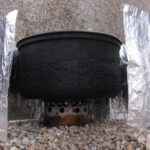The age-old question of whether cats and dogs can breed to create a hybrid creature, often playfully imagined as “cogs” or “dotties,” is a common one among pet enthusiasts and animal lovers alike. The simple, scientifically accurate answer is no. Despite sharing our homes and hearts, cats and dogs are biologically incompatible when it comes to reproduction.
Their inability to interbreed boils down to fundamental differences in their anatomy, physiology, and even their mating behaviors. These distinctions are not superficial; they are deeply rooted in their genetic makeup and evolutionary paths. Cats belong to the family Felidae, while dogs are members of the Canidae family. This divergence occurred millions of years ago, resulting in species that are too genetically distant to produce viable offspring together. Their chromosomes, the structures that carry genetic information, are not compatible, meaning that even if mating were to occur, fertilization would not result in a viable embryo.
While the idea of a cat-dog hybrid remains firmly in the realm of fantasy, the animal kingdom is full of surprising examples of interspecies breeding within closer biological families. In fact, within the cat family (Felidae), hybridization is more common than many realize. Different species of wild cats, and even domestic cats with wild cats, can and do interbreed. Notable examples of domestic cat hybrids include breeds like the Bengal, a striking feline resulting from the pairing of a domestic cat with an Asian leopard cat. Similarly, the Savannah cat is a cross between a domestic cat and an African serval, and the Chausie originates from breeding a domestic cat with a jungle cat. These breeds demonstrate that genetic compatibility exists within the cat family, allowing for the creation of fertile and fascinating hybrids.
The canine world (Canidae) also presents instances of interspecies breeding. Domestic dogs are known to interbreed with wolves and coyotes, as they share a relatively recent common ancestor and retain a higher degree of genetic compatibility. This is why, in certain regions, concerns exist about the genetic purity of wild wolf populations due to interbreeding with domestic dogs.
Beyond cats and dogs, the natural world offers a plethora of examples of hybridization. Horses and donkeys can produce mules and hinnies, though these offspring are typically infertile. Bird breeders intentionally cross finches and canaries to create hybrid offspring known as mules, often sought after for their unique songs or appearances. Falconry also utilizes hybridization, with different falcon species being crossed to produce birds with enhanced hunting prowess. Even in seemingly disparate groups like whales and dolphins, or cattle and buffalo, interspecies breeding has been observed.
It’s important to note that while interspecies breeding can occur, the fertility of the resulting offspring varies greatly. In many cases, hybrid animals, particularly males, are infertile due to chromosomal mismatches that disrupt the production of viable sperm or eggs. However, in some instances, fertile hybrids can arise and even, over evolutionary timescales, potentially contribute to the emergence of new species.
In conclusion, while the idea of a “Cat And Dog Hybrid” is a popular notion, the biological realities of these distinct species prevent such a cross. Their evolutionary divergence has led to incompatibilities that make interbreeding impossible. However, the broader phenomenon of interspecies breeding across the animal kingdom, especially within families like Felidae and Canidae, highlights the complex and fascinating nature of genetics and evolution, reminding us that while cats and dogs may not mix in that particular way, the diversity of life continues to surprise and intrigue.

